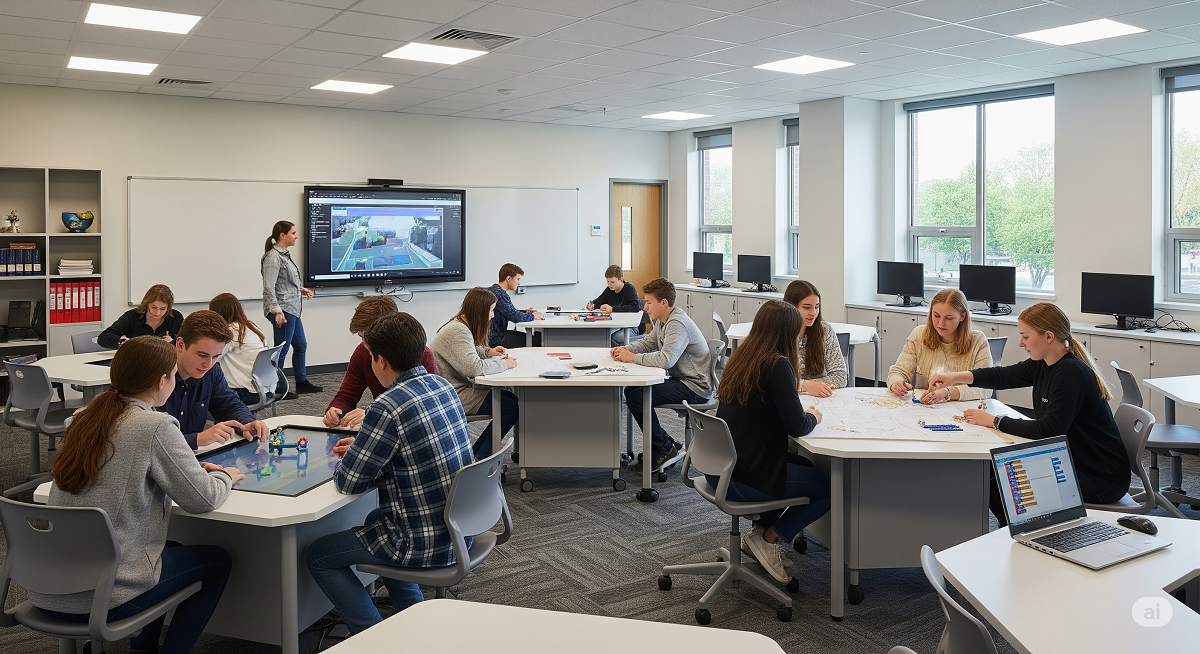What is the neuroscience secret behind Academic achievement ?
Neuroscience is the scientific study of the nervous system, which includes the brain, spinal cord, and peripheral nervous system. It is a multidisciplinary field that combines physiology, anatomy, molecular biology, developmental biology, cytology, psychology, physics, computer science, chemistry, medicine, statistics, and mathematical modeling to understand the fundamental and emergent properties of neurons, glia and neural circuits.
Neuroscience is a rapidly growing field, and there are many exciting areas of research being conducted today.
Neuroscience has the potential to revolutionize our understanding of the brain and its disorders. It is also being used to develop new treatments for neurological disorders, such as Alzheimer's disease, Parkinson's disease, and schizophrenia.
Academic achievers use recall in a number of ways to improve their academic performance. Here are some of the most common ways:
- Active recall: Active recall is a learning technique where you are asked to recall information without any cues. This can be done by answering questions, writing down what you remember, or explaining the information to someone else. Active recall is a very effective way to learn new information because it forces your brain to process the information in a deeper way.
- Spaced repetition: Spaced repetition is a learning technique where you review information at increasingly spaced intervals. This helps to ensure that the information is stored in your long-term memory. Spaced repetition can be done using flashcards, online apps, or simply by reviewing your notes at regular intervals.
- Mnemonic devices: Mnemonic devices are memory aids that can help you to remember information. There are a number of different mnemonic devices that you can use, such as acronyms, rhymes, and visual images. Mnemonic devices can be a helpful way to remember information for short-term tasks, such as taking a test.
- Chunking: Chunking is a memory technique where you group information together into smaller, more manageable chunks. This can make it easier to remember information because it reduces the amount of information that you need to process at once. Chunking can be a helpful way to remember information for long-term tasks, such as studying for a test or learning a new language.
In addition to these specific techniques, academic achievers also use recall in a more general way to improve their understanding of the material they are learning. By actively recalling information, they are able to solidify their understanding of the material and make it easier to remember for later.
Here are some additional tips for using recall to improve your academic performance:
- Start by reviewing your notes: This will help you to identify the information that you need to recall.
- Use active recall techniques: This will help you to process the information in a deeper way and make it easier to remember.
- Space out your reviews: This will help you to retain the information in your long-term memory.
- Use mnemonic devices: This can be a helpful way to remember information for short-term tasks.
- Chunk information: This can make it easier to remember information for long-term tasks.
- Practice regularly: The more you practice recalling information, the better you will become at it.
Recall and synapse are two different concepts that are often confused.
Recall is the ability to remember information that has been learned previously. It is a measure of how well information has been stored in long-term memory.
Synapse is the junction between two neurons, the basic unit of the brain. Synapses are where information is transmitted from one neuron to another.
Recall and synapse are both important concepts in neuroscience, but they are not the same thing. Recall is a cognitive process, while synapse is a structural feature of the brain.
When you recall a memory, your brain first activates the hippocampus. The hippocampus is a small structure in the medial temporal lobe that is involved in memory formation and retrieval. The hippocampus then sends signals to other brain regions, such as the prefrontal cortex, the amygdala, and the parietal cortex. These regions are involved in processing and understanding the information that is being recalled.
The recall of a memory can be affected by a number of factors, including:
- The strength of the memory: The stronger the memory, the easier it will be to recall.
- The context in which the memory was formed: The context in which a memory was formed can help to cue its recall. For example, if you remember something that happened in a specific location, being in that location again can help you to recall the memory.
- The emotional state of the person recalling the memory: The emotional state of the person recalling the memory can also affect its recall. For example, if you are recalling a happy memory, you are more likely to be in a positive emotional state, which can make the memory easier to recall.
- The amount of time that has passed since the memory was formed: The amount of time that has passed since the memory was formed can also affect its recall. Memories that are more recent are generally easier to recall than memories that are older.
Discover our most popular articles

.png)


.png)
.png)


